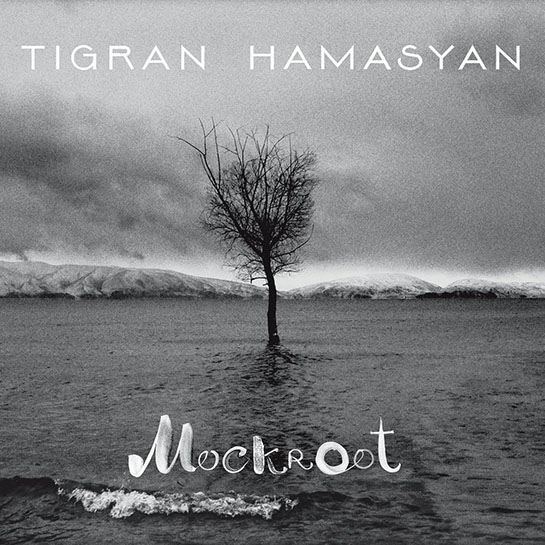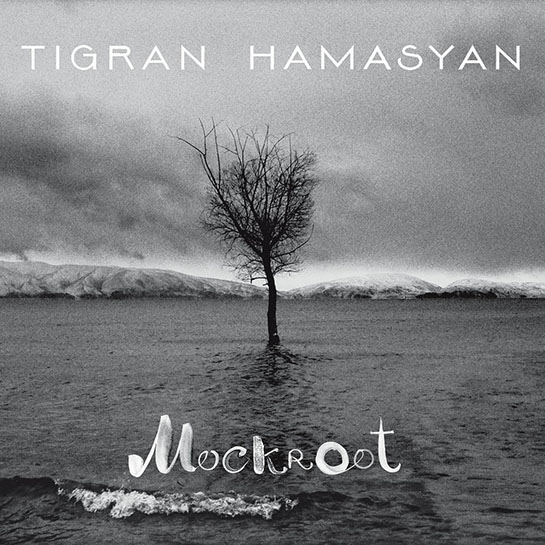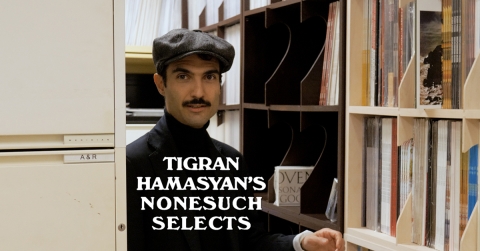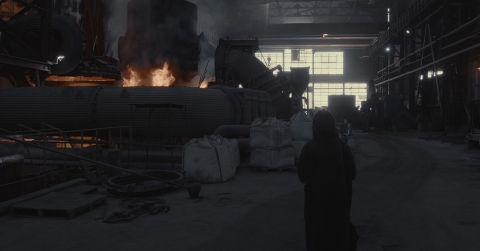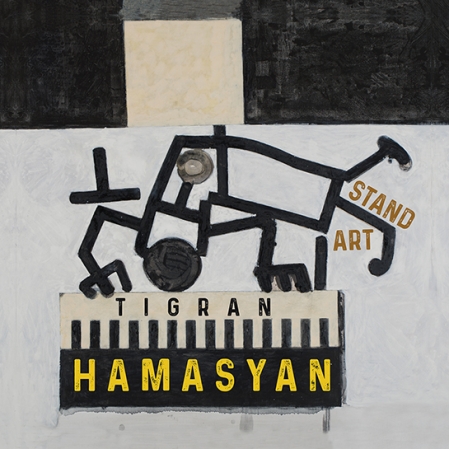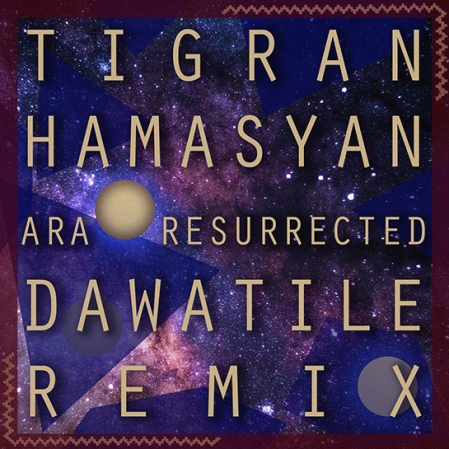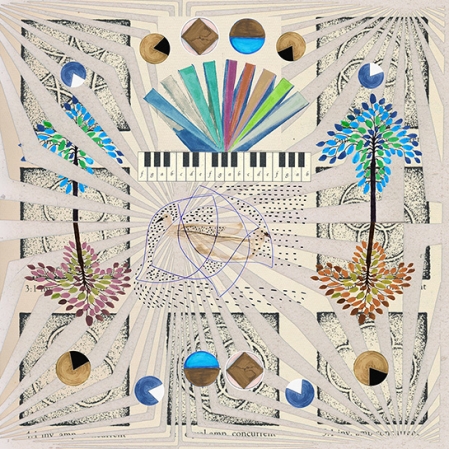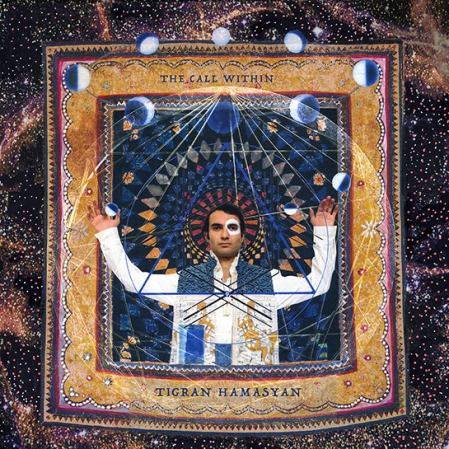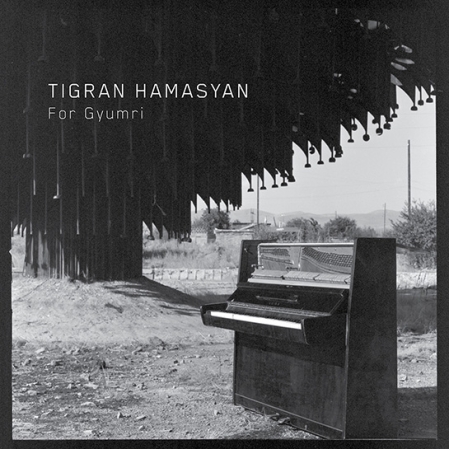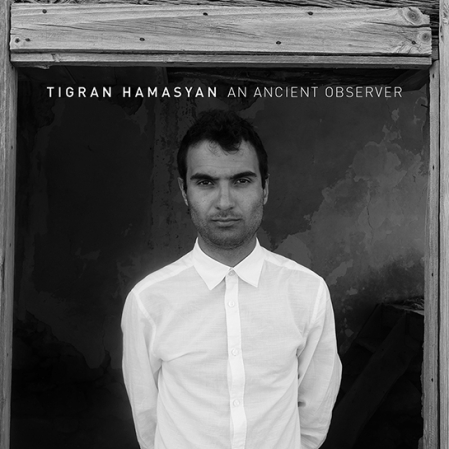Tigran Hamasyan's label debut, Mockroot, comprises new tracks written by Hamasyan, as well as his arrangements of traditional Armenian songs. Although trained as a classical and jazz musician, Hamasyan draws on a wide range of influences, including Armenian folk music, rock, electronica, poetry, and more. "There are many brilliant and perfectly finished young jazz pianists around," says the Telegraph, "but Hamasyan stands out because he has something important and urgent to say." "You will find it difficult if not impossible to get this disc out of your machine for quite a while," raves the Buffalo News. "Don’t count on getting it out of your head for a long while either."
Tigran Hamasyan’s Nonesuch Records debut album, Mockroot, was released in February 2015. Tigran’s music draws from a wide range of sources—from jazz and Armenian folk music; Bach and French fin de siècle composers; dubstep, thrash metal, and contemporary electronica. His live performances and six studio albums have received enthusiastic approval from the likes of Herbie Hancock, Chick Corea, and Brad Mehldau.
Where his last album, 2013’s Shadow Theatre, featured an extended band with choral sections, strings, and saxes, Mockroot is based around the tight trio of Tigran on piano and vocals, Sam Minaie on bass guitar, and Arthur Hnatek on drums.
"For me it’s more like an electro-acoustic Armenian rock trio than a regular jazz trio," says Tigran. "Sometimes we sound like a heavy metal band, or a dubstep DJ, or like some late 19th century Armenian composers like Nikoghayos Tigranyan and Komitas, with newer harmonic and rhythmic approaches. It’s all underlined by something that’s very simple, melancholic, and romantic."
The album title, Mockroot, touches on a theme that suffuses the album—one of the natural world always triumphing over human complexity. "It is inspired by the photograph on the album cover," he says, "a picture my friend Karen Mirzoyan took of a tree—almost dead—emerging from a lake. It was taken in a part of the world where people had deliberately raised the water level to irrigate land. And yet this tree just carried on, defiantly. It’s the idea that nature is constantly mocking humanity. Whatever we impose upon it, nature will always win. Technology has taken us into crazy areas, but we need a core of humanity to make sense of the world.
"To me this album is kind of sad and melancholic. Even the brainier or more math-oriented songs have a sort of romanticism and longing in them. The songs represent a critique of our world and humans as they are now, which is more materialistic and less spiritual, less humble and thankful, more ignorant and egotistically ‘happy,’ a lot of knowledge, but about what values? People are loving, but we love money and ourselves; we are technologically more advanced and ready to ignore love in the name of ‘progress,’ healthier and stronger, more scared and faithless. There are more tractors cultivating the soil and fewer folk songs being cultivated; there are more churches than there are people who still remember how to pray.
"Mockroot is a sort of longing and nostalgia for a human nature that’s more spiritual, more loving, more together with its roots. There is a sacrifice in it—sacrifice to try to elevate spiritually."
Tigran Hamasyan was born in 1987 in Gyumri, near Armenia’s border with Turkey. Neither of his parents were musicians (his father was a jeweller, his mother a clothing designer), and Tigran grew up listening to his father’s heavy rock collection (Led Zeppelin, Black Sabbath, Deep Purple, Queen, Nazareth). By the age of three, he was picking out pop melodies on the family piano and being sent to piano lessons; from the age of six he was attending a specialist music conservatory. By 11 he was a classical virtuoso who also sang jazz standards and Beatles tunes with a big band; by 13 he was experimenting with Armenian folk music. At 16, after winning the Montreux Jazz Festival’s piano competition, he relocated with his family to Los Angeles, where he released his debut album, World Passion, at the age of 18.
For more than a decade, Tigran Hamasyan has been part of California’s sizeable Armenian-American community, but he has spent much of the last year living in the Armenian capital, Yerevan, with his grandmother. "In April I went to Armenia to teach some master classes for a month. It rekindled a yearning I’ve had for many years to return, and I found some great stuff while I was there. It was very inspiring."
Armenia looms large throughout Mockroot. The opening track, "To Love," and "To Negate" are both inspired by the Armenian poet Petros Duryan. "Lilac" is about a tree that stood in the backyard of Tigran’s childhood home; "Song for Melan and Rafik" is dedicated to his grandparents; "The Apple Orchard in Saghmosavanq" is a romantic song about a monastery near Yerevan. "Kars 1" and "Kars 2 (Wounds of the Centuries)" are written about the town of Kars, the ancestral home of Tigran’s maternal grandparents, a place that became part of Turkey in the years that followed the infamous Ottoman genocide of Armenians during the First World War.
Although the subject matter has implicitly political overtones, Tigran avoids making these explicit. "I try not to get sidetracked by politics," he says. "Some people are more interested in using music as a platform for politics. I want to be a musician, not a politician. For me, it’s more personal.
"Armenian folk songs are sometimes political whether you like it or not—especially given the fact that 90 per cent of Armenian folk music and culture comes from a part of the country that is now in Turkey. That culture is still alive, thanks to the great-grandpas and -grandmas that kept and transferred their songs and dances to the younger generation after migrating from old Armenian cities like Van, Mush, Karin (Erzurum) and Sasun to what is now eastern Armenia. So, for me, it’s about learning what they have kept for me and about stories that arise from that situation."
Many of the tracks are inspired by poetry, in particular the flowering of Armenian and Russian verse of the late 19th and early 20th century. "I’ve always read a lot of poetry, ever since I was a teenager," he says. "I’d listen to Jan Garbarek or Keith Jarrett for hours, and then immerse myself in Armenian poetry. It will inspire specific feelings. Occasionally I will play the piano while reading a poem, accompanying the words, but usually I will try and recreate the feelings inspired by a certain poems while improvising at the piano." Several of these poems are printed in full as part of the album sleeve notes. However, despite this congruence between words and music, most of Tigran’s songs are wordless.
"When playing melodies inspired by Armenian folk songs, I sometimes try singing English language lyrics, but English sounds off-putting and unnatural and weird in the songs, while Armenian lyrics sound too direct. Lyrics can be magical, but they can often direct you to a certain place that is quite different from where the music is taking you. By singing wordlessly, you’re not obliging the audience to think about a certain thing—it can be about anything. You are relinquishing ownership to the audience, which is exciting."
—John Lewis
John writes about music for the Guardian, Uncut and Metro.
Mockroot Track by Track from Tigran Hamasyan
1. "To Love" (2:06) – This is just solo piano in a major key, with me singing wordless vocals. It’s very heavily inspired by the work of Petros Durian (1851–1872), a romantic poet from western Armenia, someone who died aged only 21. I was reading a lot of his work, and the mood of it inspired two songs on this album—this and track 10, "To Negate," which represents the flipside of the mood in "To Love."
2. "Song for Melan and Rafik" (5:56) – I wrote this in 2012, a couple of days before New Year’s Eve. It’s dedicated to my grandmother Melan and my grandfather Rafik. Both are very inspirational figures. I was only four when my grandfather died, but he has remained an incredible presence throughout my life. My grandmother still tells me stories about this fascinating man, a joker, an actor, a great chess player, someone who was into music and the arts. And, in tribute to him, the song is overflowing with rhythmic concepts. The working title for this song was "Forty-Two," because it’s actually in the unusual time signature of 42/16, which makes it an intense piece to learn! The entire song has only three chords, but the idea is to really explore one idea and take it to a lot of different places. And it’s the only track that’s not arranged for a trio, but very heavily arranged for a full quintet, featuring saxophonist Ben Wendell and vocalist Areni Agbabian.
3. "Kars 1" (5:26) – This is the first of two songs on this album based on a very famous Armenian song called "Yaman Yar." The original lyrics are about a tragic love story that takes place in the town of Kars, which is where all my mother’s and father’s families originally come from, only 50 km from my birthplace of Gyumri, but now on the Turkish side of the border. I originally arranged this song on stage, as an improvisation, when I was doing a solo piano concert with looping pedals, and I somehow ended up with a backbeat in the time signature of 5/8. I then had the idea to make it into a bigger composition for the trio. There are a few different rhythmic ideas going on within the backbeat and it’s the result of the relationship between the melody and the bass line and the harmonies the two create. This piece is a folk song that is very much electronica-inspired, and slowly develops into a metal/avant-guard dubstep.
4. "Double Faced" (5:30) – This song really does have a double face. It’s basically two melodic ideas going on at the same time, with two separate pulses, during most of the song. The idea was to use groupings of 5/16 over 8 bars of 4/4 in a way that it would make us feel like the 5/16 is the pulse, even though the entire song is in 4/4.
5. "The Roads That Bring Me Closer" (4:16) – I wrote this last year. There is no folk element here—it’s very melancholic, very clear, like a pop song. It’s one of those rare songs that you write and you feel that it has already been written. It sounds instantly familiar, like the soundtrack to a fairy tale I might have heard as a kid. I’m doubling up the lead vocals with Gayanée Movsisyan, while the beats get pretty fat!
6. "Lilac" (4:10) – "Lilac" is a very personal piece. I wrote it a couple of years ago, originally for a movie soundtrack, but it was never used in the movie. It’s about a lilac tree that stood in the backyard of our family home in Gyumri when I was four or five. I can still smell it now, and that smell conjures up memories of childhood. It’s a waltz in a minor key, and the melody on this is less of an Armenian folk melody, and probably owes more to the French fin de siècle composers I love, like Satie, Ravel, and Debussy.
7. "Entertain Me" (3:19) – This is about how performers can be driven to terrible things in the name of entertainment! We always want more and more, with entertainment or with technology, and nothing is enough. So it has a very busy, heavy metal-ish feel to it, and there’s a very complex structure—I think if you worked it out it would be in a time signature of 256/32. There is a melody that is grouped in 35/16 that repeats seven times and then resets. Again, it’s very, very rocky, with a melody in the middle part of the song that is played with "muted" prepared piano that is imitating an ensemble of Armenian string instruments like a kanon, or santoor.
8. "The Apple Orchard in Saghmosavanq" (4:22) – Saghmasavanq is a very famous 12th-century monastery in Armenia, close to Yerevan. It’s a magical place, right on a cliff, surrounded by the most incredible scenery, with hectares of apple orchards. The song starts off very intimate, as a piano solo in a minor key, with a voice singing the melody, but the idea was for it to develop into something quite different. By the end there is a huge wall of sound that is almost turning into white noise!
9. "Kars 2 (Wounds of the Centuries)" (1:34) – They call Armenia a country of stone, because there are so many huge mountains made up of crazily shaped and oddly coloured stones. Every time I see these mountains, they tell me something. They have a story. And, even though the town of Kars is no longer part of Armenia, and even though the Armenian culture in that environment doesn’t exist anymore, it has been preserved in those cliffs and those rocks. That’s what I’m trying to capture in this simple, eight-bar phrase that goes with a poem. Arthur, the drummer, is playing a fat snare drum with his fingers, and a bass drum that has been tuned very low so it sounds like a mixture of two Armenian frame drums. And, again, I’ve put mutes on the strings of my piano to make it sound like an Armenian santoor, or a kanon.
10. "To Negate" (5:17) – This is linked to the opening track, "To Love," and, again, it’s based on a Petros Durian poem that is reprinted in the album sleeve notes. It’s in the same key as "To Love," but in a different mode—an odd, Armenian mode—and in the time signature of 13/8.
11. "The Grid" (5:56) – This song is a suite—I think of it as a concerto for a trio. It’s through-composed, and has so many sections. It’s based around a grid-like rhythmic pattern, which is two bars of 4/4 that is grouped in 5,5,7,5,5,5/16 notes. The idea is to explore that rhythm, more and more deeply. Soon the rhythms just become dots. There are metric modulations that occur which result in the pulse changing a few times within the same space.
12. "Out of the Grid" (10:25) – This track is a reaction to "The Grid"; it’s where you lose the "grid" from the last piece, although you can still chase back the "dots." I can imagine it can get frustrating to listen to! At about 5’30 is a hidden track. It’s a minor-key waltz that’s the oldest track on the album. I wrote it in 2009 and I’ve been playing it for the last five years, especially with this trio. In a way it’s a reflection of the sixth track, "Lilac"—a 21st-century romantic waltz.
PRODUCTION CREDITS
Recorded May 2014 by Antoine Gaillet at Studio de Meudon, Meudon, France
Assistant Engineer: Clément Gariel
Mixed by Antoine Gaillet at Studio Goo, Paris, France
Mastered by Nate Wood
All music composed by Tigran Hamasyan, except for “Kars 1” and “Kars 2” (Traditional Armenian/Tigran Hamasyan).
Photography by MirzOyan
Album Artwork & Design by Vahram Muradyan
546521
MUSICIANS
Tigran Hamasyan, piano, voice, keyboards, synths, sound effects
Sam Minaie, electric bass
Arthur Hnatek, drums & live electronics
Gayanée Movsisyan, voice on track 5
"Song for Melan & Rafik" features:
Areni Agbabian, vocals
Ben Wendel, saxophones
Chris Tordini, bass
Nate Wood, drums
